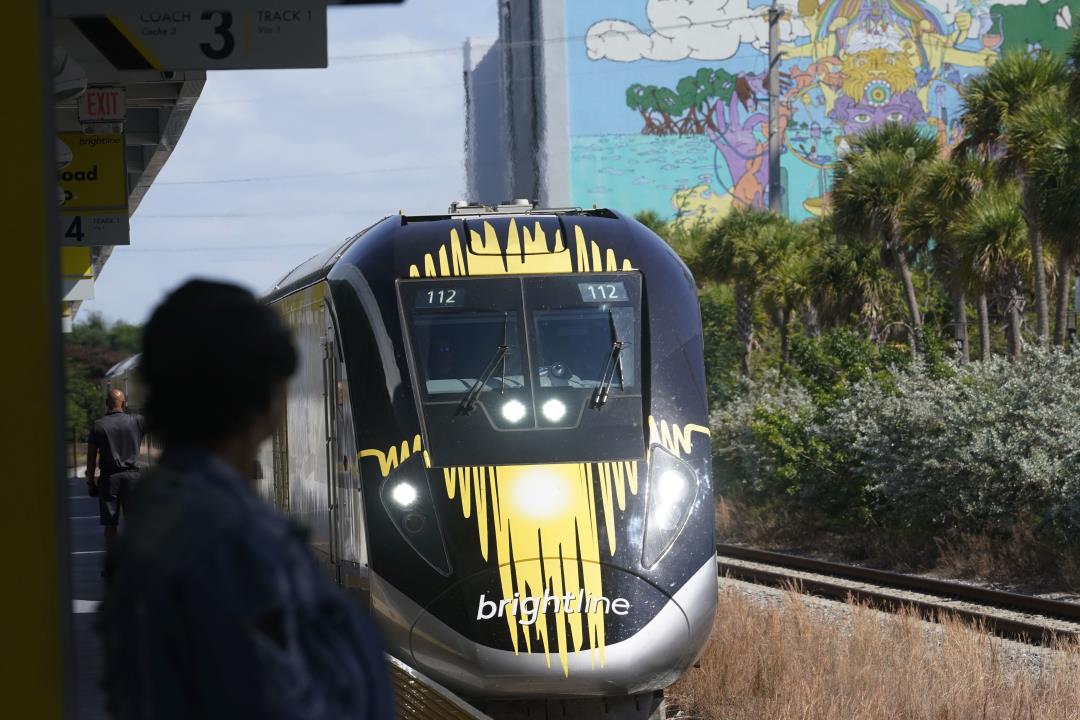
The launch of Florida’s Brightline train service between Miami and Orlando marks a significant test for privately owned high-speed passenger trains in the United States. Brightline, owned by Fortress Investment Group, is making a $5 billion bet that 8 million people will take the 3.5-hour, 235-mile trip between the state’s popular tourist hubs each year, with trains reaching speeds of 125mph. A round-trip ticket for business class costs $158 for solo riders and $298 for first-class, while families and groups can purchase four round-trip tickets for $398. The service will operate with 32 daily trains.
Brightline, known for its neon-yellow trains, is the first privately owned intercity passenger service to launch in the US in a century. The company has plans to connect Southern California and Las Vegas by 2027, with trains traveling at speeds of 190mph. The only other high-speed line in the US is Amtrak’s Acela service between Boston and Washington, DC, which began in 2000 and is owned by the federal government.
The trains in Florida will run on biodiesel and reach speeds of up to 79mph in urban areas, 110mph in less populated regions, and 125mph through Central Florida’s farmland. Brightline is also considering possible extensions to Tampa and Jacksonville. According to John Renne, director of Florida Atlantic University’s Center for Urban and Environmental Solutions, the Miami-Orlando corridor is an ideal location for high-speed rail due to the approximately 40 million annual travelers between the two cities, with over 90% of them opting to drive. Renne suggests that a successful venture by Brightline could spur the development of more high-speed rail lines between major cities 200 to 300 miles apart, not only by Brightline but also by competitors.
Brightline trains have had the highest death rate among US railroads since the launch of its Miami-West Palm Beach operations in 2018. According to an ongoing analysis of federal data, conducted by the AP since 2019, the trains have been involved in 98 fatalities, resulting in approximately one death for every 32,000 miles traveled. In comparison, the next-worst major railroad has a fatality rate of one death per 130,000 miles. It is important to note that none of the deaths have been attributed to faults on Brightline’s part, as most have been suicides, instances of drivers bypassing crossing gates, or pedestrians crossing tracks illegally. Since June, Brightline has not experienced any fatalities, which is the longest duration without a fatality except for during the pandemic shutdown.
(Read more high-speed rail stories.)
Denial of responsibility! Vigour Times is an automatic aggregator of Global media. In each content, the hyperlink to the primary source is specified. All trademarks belong to their rightful owners, and all materials to their authors. For any complaint, please reach us at – [email protected]. We will take necessary action within 24 hours.


